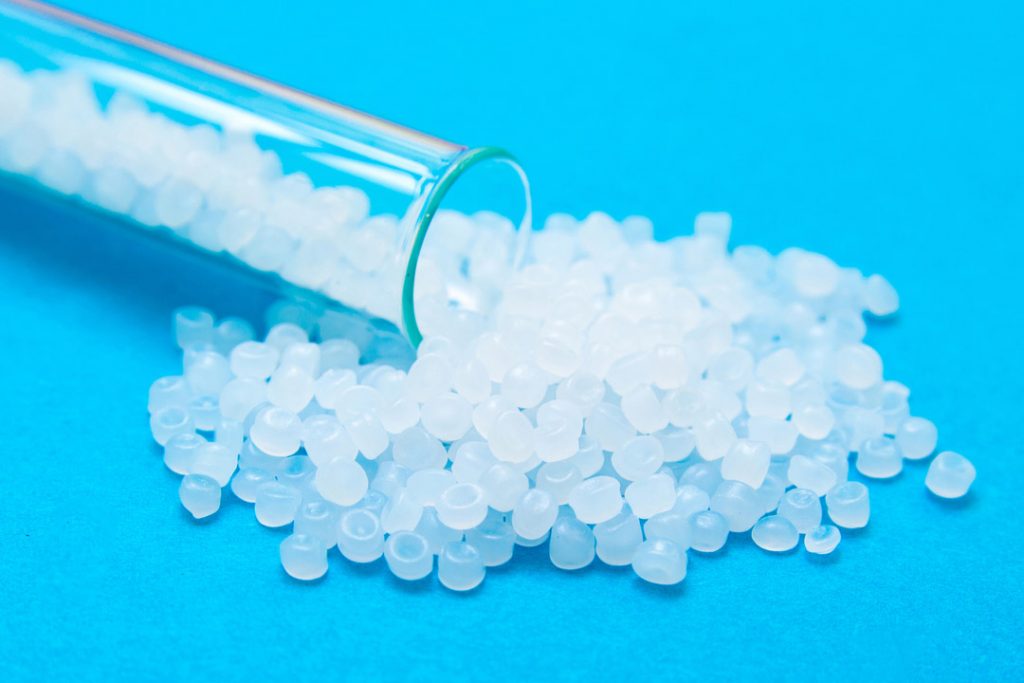
A newly published study set out to explore the barriers and possible solutions to growing the use of recycled plastic in food-contact-suitable applications. | StanislauV/Shutterstock
Contaminating additives and declining recycling rates for food packaging are limiting growth in production of food-grade recycled resin, according to research from a consulting firm.
Stina Inc., formerly known as More Recycling, recently published “Assessing the state of food grade recycled resin in Canada and the United States.” The report, commissioned by Environment and Climate Change Canada, set out to explore the barriers and possible solutions to growing the use of recycled plastic in food-contact-suitable applications.
The report focused on PET, HDPE and PP. It examined current and potential sources of food-contact-suitable recycled material, collection and processing capacity, and current end uses.
Stina completed 16 interviews of stakeholders from companies that produce or consume a large quantity of food-contact resin in North America.
The research found a limited supply of recycled plastic that can be used in food contact applications. This was identified as the “biggest challenge” among the interviewed stakeholders.
“In Canada and the United States, the vast majority of plastic products and packaging produced each year and placed on the market is not suitable for processing into food grade PCR,” the report found.
Three factors lead to a package not being recycled into a food-contact application, the report found. These include the package being initially produced using resin that’s not suitable for food contact, a converter using additives that render the package not suitable for food contact, or the packaged product leaching contaminants into the package.
There are a few solutions that could address these challenges, Stina found. These include creating greater transparency about the chemical composition of packaging, reducing use of additives that render a material not suitable for food contact, and more general recyclability measures such as promoting design for recycling.
One interviewed converter told the researchers that “design for recycling is critical” to increasing the quantity of material suitable for food-contact applications, because “the way a package starts its life impacts what it could be used for next.”
The researchers also noted that improving collection systems specifically for food-contact recycled plastic would help with the supply challenges.
For example, some interviewees “acknowledged that more deposit systems in the U.S. and Canada would improve the recycling rate for bottles significantly and provide more readily recyclable high-quality material for reclaimers that could be suitable for both food-contact and other applications that require high quality PCR,” the report states.
The research also probed North American processing infrastructure for food-contact recycled resin. Food-contact RPET processing capacity made up about 60% of the total RPET processing capacity in 2019, Stina reported. For natural HDPE, food-grade made up about 20% of the bottle processing capacity that year. Stina did not report the capacity for food-contact PP, looking to “protect the confidentiality of the small number of polypropylene recyclers.”
The study found the food-contact resin processing sector has been constrained by the feedstock shortage.
“All recyclers interviewed said that their capacity to process more food grade PCR is limited by available supply,” Stina found. “Many noted they would expand their capacity to meet additional demand for food grade PCR if there were more guaranteed suppliers of recycled material from the right sources.”
Interviewed stakeholders stressed the importance of sourcing when it comes to food-contact recycled resin.
“Knowing what a bottle contained or what it may be exposed to along its journey of use, collection, sorting, and storage is important and must be factored into the recycling process,” the report found.
The research also touched on the importance of investing sooner rather than later, before the supply gap gets even worse.
“As more policy and legislation and brand commitments come into play to drive the use of PCR in PET bottles, there will be more pull on the supply leading up to 2030,” the report states. “In an already tight supply market, RPET prices will likely rise. Investments are urgently needed in collection and then processing infrastructure to increase supply of bottles to be reclaimed and converted to PCR.”
Beyond the food-contact resin research, Stina completes a broader yearly survey of North American plastics recycling, examining processing capacity and infrastructure.
More stories about research
- RIT researchers develop AI-based textile recycling system
- Researchers: Effective plastic treaty requires production cuts
- Research, programs improve film recycling access


